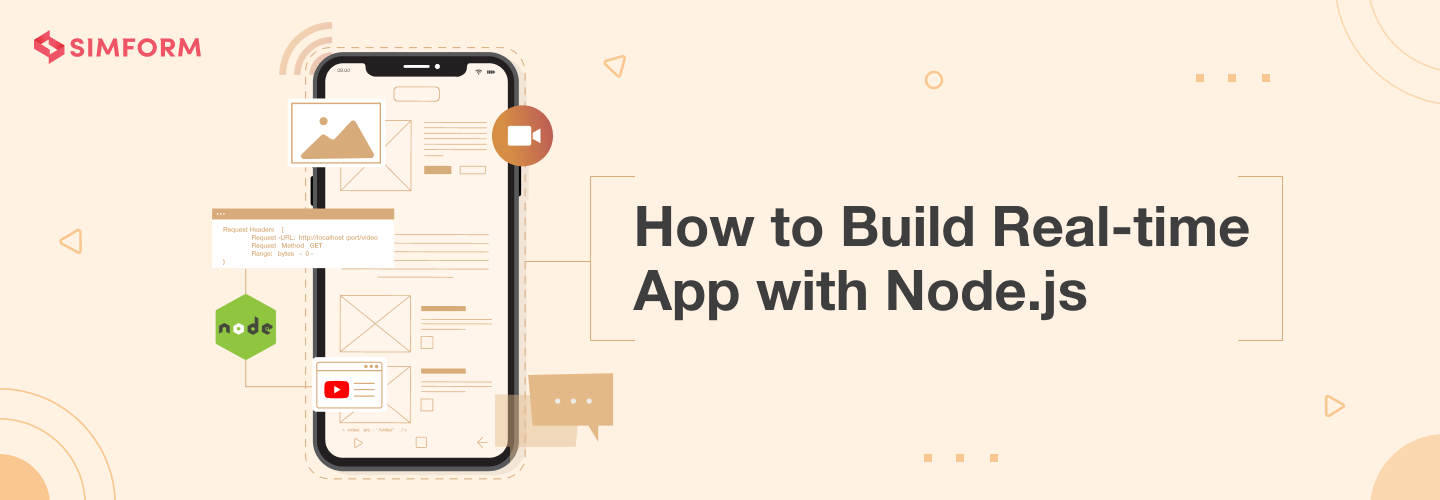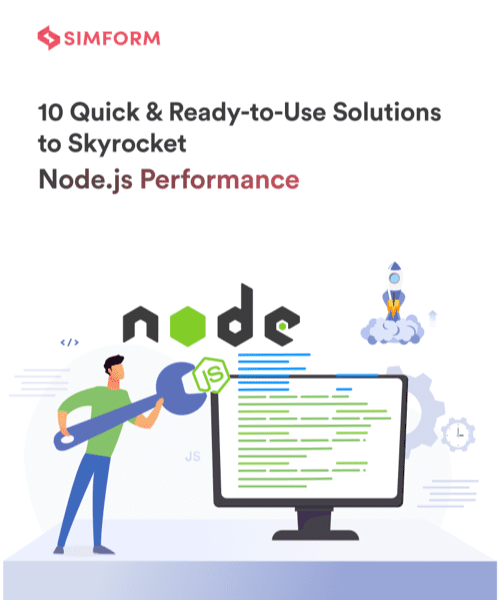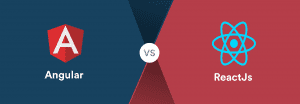How to Build Real-time Application with Node.js
Uber is one of the first Node.js adopters. Its core trip execution engine was originally written in Node.js because of its asynchronous primitive, simple, and single-threaded processing. Therefore, it’s safe to say that Uber was one of famous companies to deploy Node.js technology in production to build a reliable system for its passengers and drivers. As a result, the company has successfully processed over 2 million remote procedure calls (RPCs) per second post Node.js implementation. It gives Uber the ability to manage large quantities of concurrent connections hassle-free.
Similarly, tech giants like LinkedIn and Netflix have used this technology at different stages to deliver modern and scalable applications. The main reasons for leveraging Node.js are as follows:-
- High performance– The page loads within seconds.
- Common programming language – They can use the same language for both the server-side and client-side.
- Ease of use – A straightforward way of writing, debugging, and engineering the API.
To summarize, Node.js can quickly process a significantly large amount of data and provide convenient analysis and quicker code deployments. Now that we have a basic knowledge of Node.js and its benefits let’s understand how it can fuel real-time application development.
What is the purpose of the real-time app?
A real-time app allows users to receive and interact with information as it happens, without delays or lags. It enhances the user experience by providing immediate and accurate information or communication, improving efficiency, and, ultimately, increasing productivity.
A few examples of real-time applications are:
- Social media platforms
- Instant messaging services
- Video conferencing applications
- Online gaming platforms
Common Challenges: What are the Challenges in Building Real-Time Apps?
From web apps to business applications, the user’s primary necessity is to get updates and stay on top of things. However, many companies get stuck while building real-time web apps at the initial stages because they are not aware of the challenges they might encounter during real-time web app development.
Scaling
Scalability is the main challenge development teams face while building real-time web apps. Each request of a refreshing query every 5 seconds needs a whole set of database queries. It works fine with ten users; however, it collapses under hundreds of users. Moreover, it’s also important to consider the right toolset for your application. The developers are responsible for designing data flow, events, and integration points from the scaling perspective.
Node.js offers viable solutions in terms of scalability to many big companies like Netflix, Walmart, Uber, PayPal, etc. For example, LinkedIn has 467 million users in over 200 countries. The company replaced its synchronous Ruby on Rails mobile app in which clients used to make several calls for a single page, with an asynchronous event-based system. The team decided to use Node.js owing to its scalability and performance efficiency, and it proved to be the right approach for them.
Here’s how Deepank Gupta, Senior Software Engineer at LinkedIn, explains it:-
| “Node.js development also encourages you to think in certain ways. Node provides an evented system with a single process which executes multiple requests. It has no concept of thread-locals forcing you to make your code stateless and modular. Although Node has added support for domains; it is mostly untested for high qps services.” |
Similarly, Uber’s Senior Staff Engineer, Matt Ranney, explains the team’s experience of using Node.js–
| “One of the things that make Node.js uniquely suited to running in production is that you can inspect and change a program without restarting it. So very few other languages offer that capability. Not a lot of people seem to know that ability exists, but indeed you can inspect and even change your program while it’s running without restarting it.” |
Security
When it comes to real-time data streaming platforms, it’s necessary to consider the complete workflow’s security aspects. For example, live streaming applications need to integrate with existing security layers to support SSO (Single Sign-on) and control access to data and systems based on the user’s role.
The platform should also support data protection, including data encryption at rest and data in motion, and algorithms’ intellectual property. It can be challenging when algorithms are accessible on a cloud system or running on edge devices. It is because many analytics platforms operationalize algorithms as scripts or unpackaged codes.
Finding the right data format, development frameworks & schemas
Streaming is typically real-time. In real-time apps, stream data processing is only one aspect of its overall functionality. This streaming data finds its way to a large-scale data repository, either on-premise or cloud-based. Analysts and domain experts use it to extract insights, understand trends, and develop algorithms applied in real-time to data streams that enhance operations and extract business value. The structure of data and tools that analysts, data scientists, and domain experts have at their disposal can impact the entire platform’s adoption and application. Following are some stats that will help you understand the popularity of video streaming in the past and future:
- According to Statista, in 2020, users globally spent more than 480 billion hours watching live streaming content, especially on mobile devices.
- As per this report by Cisco, the video will make up 79% of all mobile traffic by 2022.
Streaming data consists of a series of time-stamped data packets. Therefore, developers should search for tools for processing time-series data. This way, it makes it easy to clean, visualize and explore patterns. These tools also provide a development framework necessary for the streaming process. It can make the development and deployment of algorithms to the operating system more efficient and less error-prone.
To avoid developing costly predictive maintenance algorithms, it’s best to use system simulation tools to generate synthetic data, which supplements real data in developing algorithms.
Node.js architecture for real-time apps
The workload is one of the most popular reasons to scale applications. That’s where Node.js comes into play. It provides scalability to increase the availability and tolerance to real-time app failure. As a result, Node.js has become one of the best programming languages to build real-time apps due to its event-driven and asynchronous nature.
Node.js-based real-time apps use single-threaded event loop model architecture to handle multiple concurrent clients. On the other hand, technologies like JSP, Spring MVC, ASP.NET, HTML, AJAX, and JQuery follow multithreaded request-response architecture to handle multiple concurrent clients.
But, Node.js architecture makes it different from other technologies. The single-threaded event loop architecture possesses the following advantages:
- It easily handles more and more concurrent client requests.
- Apps based on Node.js use fewer threads to utilize only fewer resources or memory.
- An app based on Node.js gets more concurrent client requests; therefore, there is no need to create more threads due to the event loop.
- Due to its architecture, Node.js gets concurrency and asynchronism characteristics.
An overview of Node.js Single-Threaded Loop Architecture:
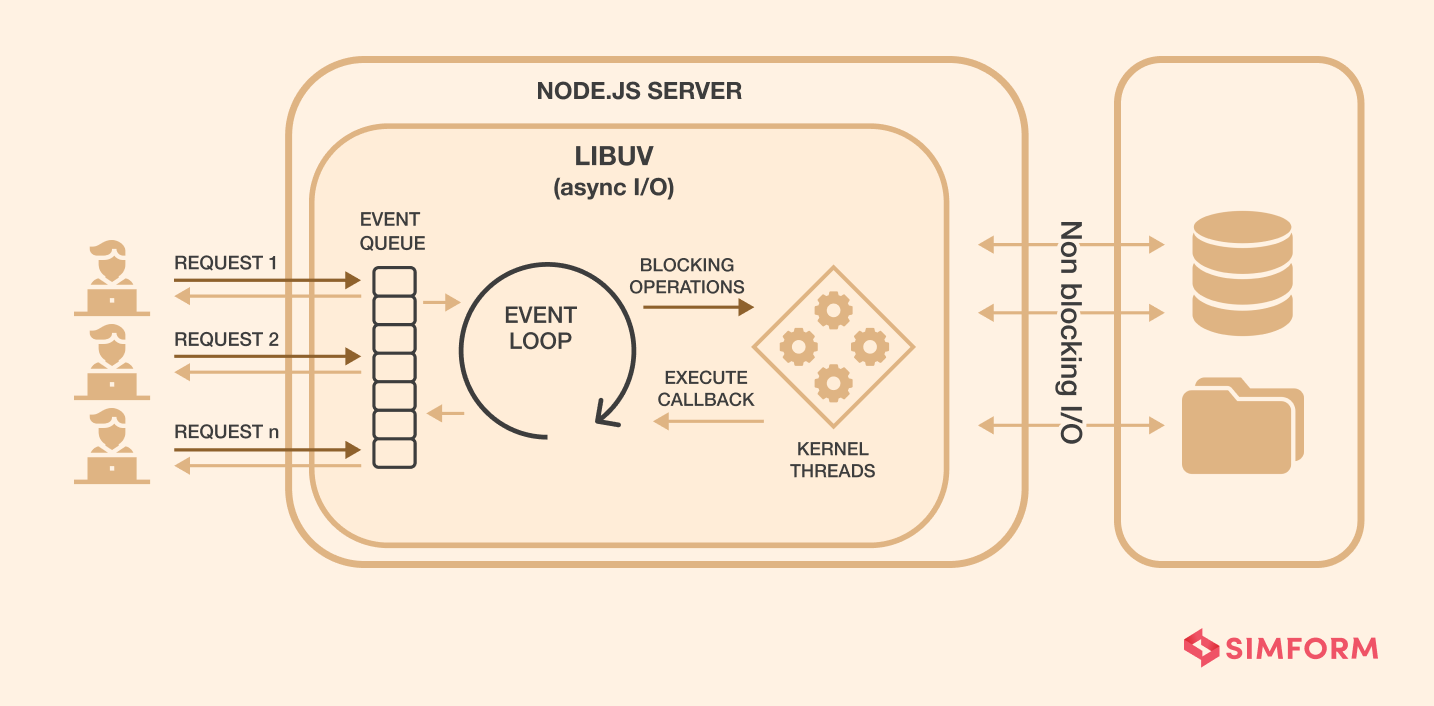
The main idea behind adopting this architecture is that a single main thread can perform and scale much better under typical web loads with comparatively conventional “one-thread per request” architecture. That’s why: Node.js is the go-to option for many since it has advantages in terms of scalability and speed for real-time apps.
Socket.IO & its use cases
If we’re talking about real-time apps, we can’t forget to mention Socket.IO, a JavaScript library, an essential ingredient for building real-time applications. Since it enables bi-directional communication between web clients and servers. It also consists of two parts: client-side library and server-side library. A client-side library runs in the browser and a server-side library for Node.js Socket.IO, enabling real-time bi-directional event-based communication.
You may be aware that Node.js has a module called Socket.io, which handles constant communication between the client and the server, and allows the server to push real-time updates to clients.
Socket.io framework makes it easy to implement Socket and is available for iOS, Android, backend, and front-end. It is an excellent tool for developers wanting to set up bi-directional socket connections between client and server. It makes simple apps such as live chat much simpler to implement.

Use Cases of Socket.IO for real-time apps
Multiplayer Gaming Application
The multiplayer gaming app with two or more players is a use case of Socket.IO. It’s impossible to make HTTP or HTTPs calls to develop the real-time multiplayer gaming app because their packet size is more prominent. On the other hand, these calls’ packet sizes are prolonged. In such cases, the Socket.IO library is best to send and receive data to and from the server.
What’s more? Socket.IO library is fast and capable of sending only those data packets which are needed. So, using only HTTP programming, you will not be able to create any multiplayer gaming app or application that requires interacting with a server on a real-time basis.
Single-Page Applications (SPAs)
SPA is a web application that fits on a single page on the browser. Such an app dynamically rewrites the current web page rather than loading the whole new page. As a result, users can experience a similar experience as a desktop app. SPAs are widely used to build social networking apps and project management tools. Google and Gmail are popular examples of single-page applications. Basically, it consists of only one page with all downloaded content initially, and since it is lightweight, much work is performed on the backend rather than calling information directly to and from the frontend. Single Page Applications usually run on JavaScript (Angular, React, or Vue framework) on the frontend and Node.js on the backend.
Twitter is another popular application that runs smoothly with JavaScript and Node.js. Similarly, Netflix’s adopted Node.js to transform its website into a single-page application. Java supports the backend of Netflix while Node powers its user interface.
Video Conference Apps
Node.js is a great choice for developing video conference streaming apps. Videos typically work with streams. In simple terms, a backend does not send the entire video at once, but a video is sent as a set of smaller chunks. Finally, it ships the whole video. That’s why video buffers while watching a video on slow broadband since it only plays the chunks it has received and tries to load more.
The bottom line is that Node.js is also a great choice for building conference/ video streaming apps. It sends data in small chunks that are sent to the frontend piece by piece rather than in a huge single package. It lets users process the files while they are still uploading.
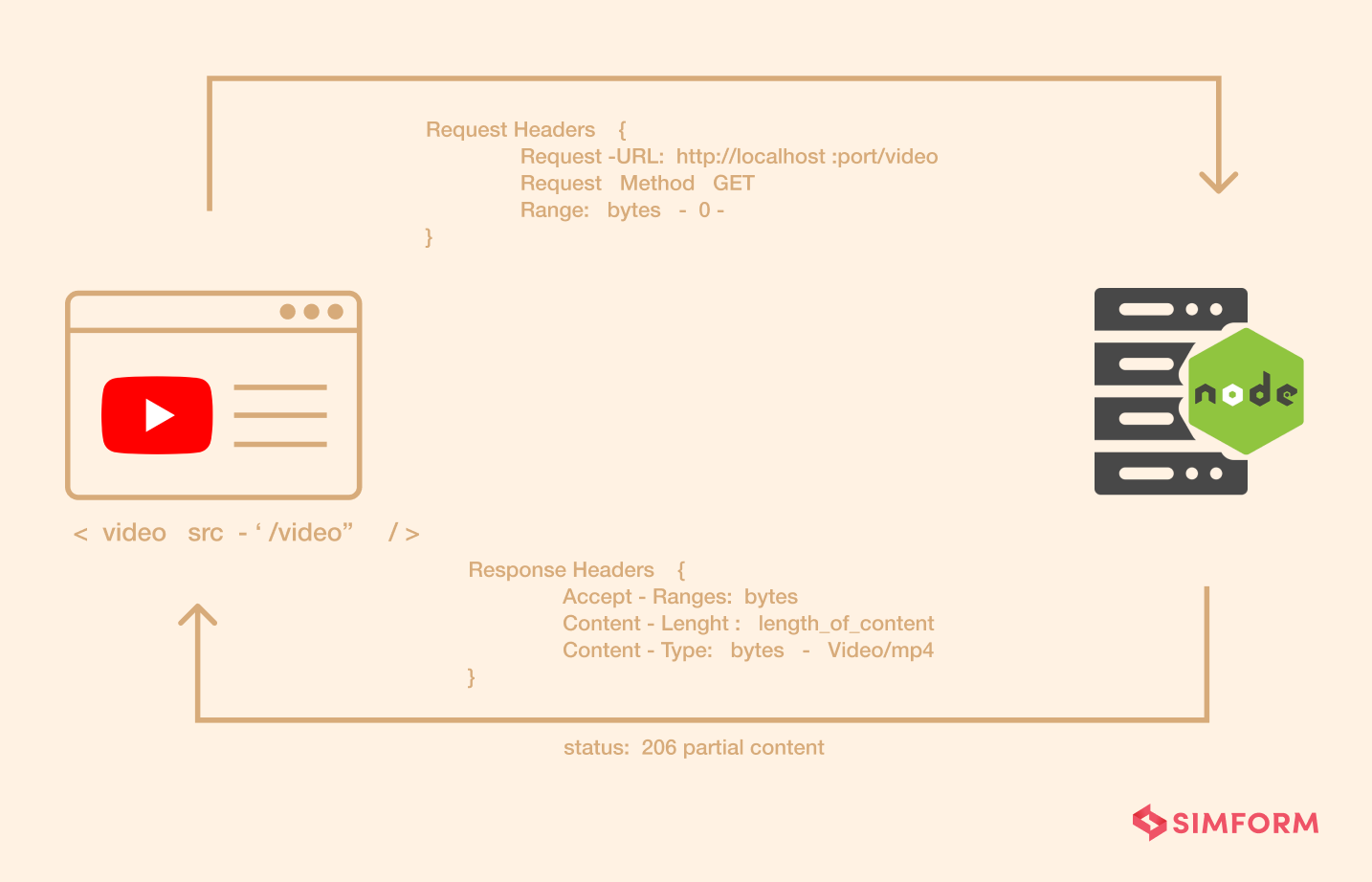
Real-time chat app
In a real-time chat app, when one user, suppose ‘A’ is typing something, then the other user, ‘B’ should know that ‘A’ is typing. This is the crux of a real-time chat application. WhatsApp and Facebook Messenger are two popular examples of real-time chat applications.
If we use HTTP calls in such apps, the other user ‘B’ will never see the other user’s status because of the delay. To overcome this problem, Socket.IO comes into play. With the use of Socket.IO, when user ‘A’ types anything, his/her device will send only one data packet, which will inform the server that he/she is typing. Therefore, it will be delivered to another user, i.e., B. In other words, with Socket.io, when the server receives a new message, it will send it to the client and inform them.
During real-time chat app development with Socket.IO, the entire process speeds up and reduces the data transfer.
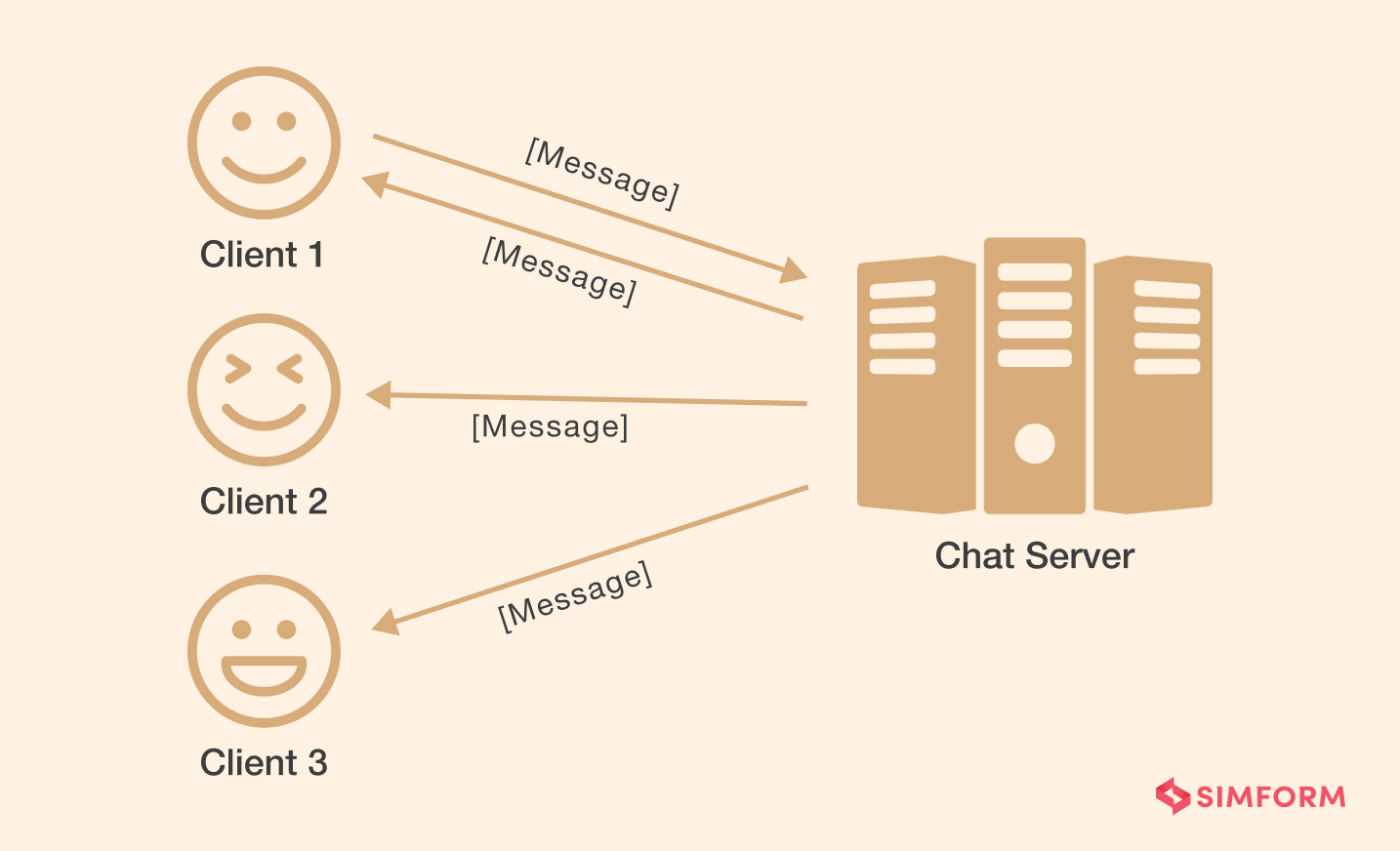
How is Node.js suitable for building real-time apps?
Real-time web apps need HTTP push capabilities, while HTTP has a pull-oriented nature. HTML5 usually comes with two other standardized solutions: Server-Sent Events and The WebSocket API.
No matter what solution you decide to utilize, a maintained connection is a must-have. It is a dedicated process per visitor with a dedicated memory cost.
To overcome this, the single-threaded event loop environment of Node.js is suitable and makes this paradigm accessible on the server to a huge community of developers with an easy way to share contributions.
| Node.js powers our web applications and has allowed our teams to move much faster in bringing their designs to life. ~ Jeff Harrell, Director of Engineering at PayPal |
Easy scalability
The workload is the prime reason to use Node.js in web applications since this technology increases the system availability and tolerance to failure. Using Node.js for web app development is one of the best options for large organizations since it runs on the V8 engine, and it is speedy in terms of computing speed that can, in turn, increase traffic on the web mobile portals.
Real-time sports event apps deal with real-time users. These apps need speed and scalability, which requires continuous focus. Node.js helps create event-driven features and non-blocking I/O of real-time sports events.
Moreover, its asynchronous request handling mechanism allows requests without blocking (non-blocking I/O) thread. When a request is processed in a real-time app like a Sports event app, it pushes out a callback and continues serving requests. This way, Node.js technology does wonders in this niche by making the most of single-threading, which results in short response time and concurrent processing.
Node.js is the best-suited technology for non-blocking functionality. It’s also an elegant solution for real-time apps to handle high request volumes due to its asynchronous I/O method, which allows the simultaneous serving of requests while read/write completes.
Creating a performant real-time app that can handle many incoming connections is a real challenge. A common solution provided by Node.js is to distribute traffic to balance the connections. This approach is known as load balancing. Luckily, Node.js enables developers to duplicate an app instance to handle more connections. It can be done on a single multicore server or through multiple servers.
Data streaming
As we already know, Node.js is efficient at handling I/O requests. It leverages such features in online data streaming. Speaking of the traditional framework, HTTP requests and responses are considered data objects. These are, in reality, data streams. Node.js effectively uses these streams to carry out operations while processing the data on it.
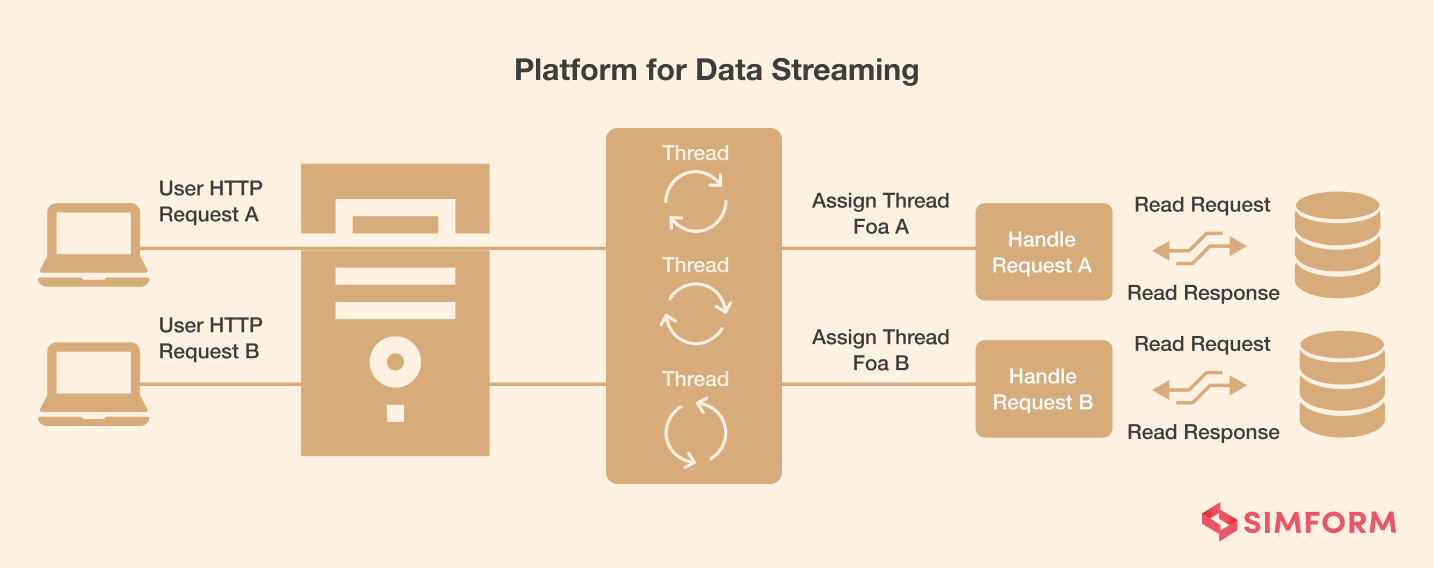 Node.js possesses the feature of transcribing the uploading video. It saves a lot of processing time as multiple operations are happening on the video at one moment. Thus, it makes Node.js a favorable option for both online and real-time video streaming.
Node.js possesses the feature of transcribing the uploading video. It saves a lot of processing time as multiple operations are happening on the video at one moment. Thus, it makes Node.js a favorable option for both online and real-time video streaming.
It is equally suitable for developing weather apps because of its fast, scalable characteristics, making real-time apps fast and high-performing. A weather app’s top requirement is to process and consume real-time information. Node.js technology is exceptionally fast for multi-user real-time data situations.
On the other hand, OTT streaming service platforms are also great examples where Node.js has some positive highlights in terms of data streaming. HTTP requests and responses are data streams — for instance, processing the data when it is simply being transferred, such as sound/video encoding.
Overall, Node.js is a good choice for building OTT streaming apps in which the process of data is divided into small chunks, which are usually sent to the front end part-by-part rather than in a single huge package. This way makes it easier to load data packages in large numbers instead of being loaded as a whole, from beginning to end.
Single codebase for real-time apps
The best thing about using Node.js is that it enables developers to write code on both the client and server-side. This way, it makes code deployment and execution easier and faster. It also helps in data transmission between the server and client faster as no conversion is required. Therefore, it helps in quicker data organization.
Node.js is best suited for handling concurrent connections, making it an excellent framework to develop real-time as well as multi-user web apps. Chatbots and gaming apps can also be created with the help of Node.js. It powers these connections using Web Sockets. It is a two-way communication channel between server and client. The server can send data to the client via a simple process.
For example, real-time notification delivery apps include real-time apps such as taxi applications, transportation, eCommerce, and logistics. Status and order updates are crucial for such applications that fall in this category.
Popular apps like Uber, TaskRabbit, Doctor on Call, and eBay have marketplace business models; they use real-time notification delivery features to facilitate the communication between customers and service providers.
Reduced response time
Node.js possesses the single-threaded event loop model since it helps easy handling more concurrent user requests without creating more threads while employing fewer resources.
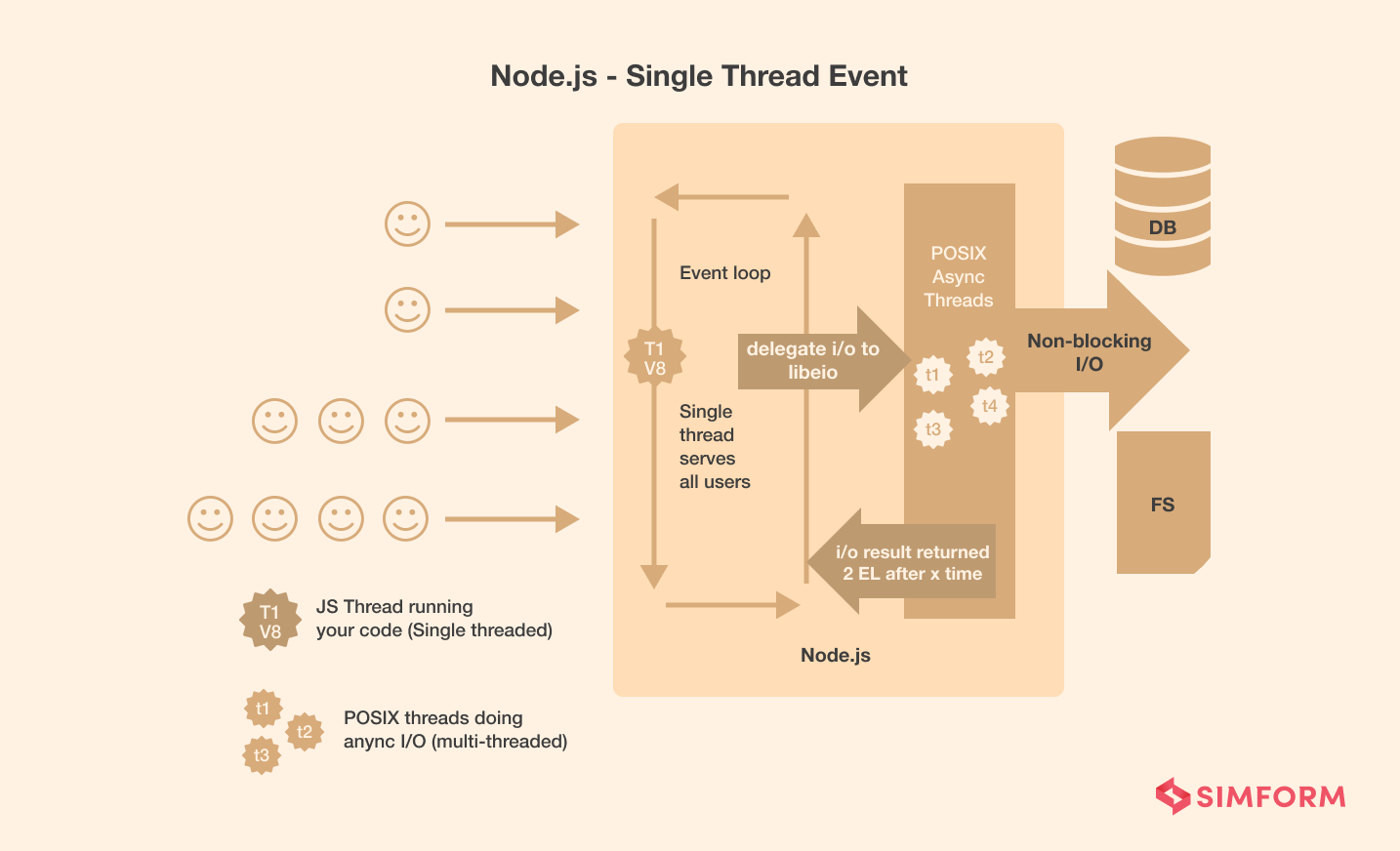 The very famous app PayPal has witnessed many benefits of using Node.js in reducing response time. The company’s main goal was to reduce server response times as slow response times could damage the business. It resulted in the pages being 200ms faster, making a significant difference.
The very famous app PayPal has witnessed many benefits of using Node.js in reducing response time. The company’s main goal was to reduce server response times as slow response times could damage the business. It resulted in the pages being 200ms faster, making a significant difference.
PayPal achieved a faster and optimal performance with:
- Written in 33% fewer lines of code.
- Constructed with 40% fewer files.
- 35% decrease in the average response time for the same page.
Highly Extensible
Therefore, it’s safe to say that Node.js is extensible. It does not make it more functional and scalable but opens up new possibilities for improvement. Similarly, the backend uses NoSQL queries to run through databases. So, writing a backend in Node.js saves the coder from modulating syntax differences. It also enables the queries to run without any data conversion issues. Thus, it makes Node.js a favorable option for building real-time web apps. You can also create HTTP and TCP servers using the built-in APIs in Node.js.
Power of Nodejs: Real-World Examples
Do you know that Node.js is being utilized by a portion of the greatest worldwide associations, including Airbnb, NASA, PayPal, Netflix, Trello, Walmart, Uber, and LinkedIn?
In actuality, 98% of 500 fortune companies use Node.js daily. We’ve compiled a list of real-world examples of Node.js and how Node.js has helped these tech giants solve their biggest problems.
PayPal
One of the biggest payment systems globally, PayPal, enables users to transact online in over 100 currencies worldwide. The company uses Node.js to build the consumer-facing side of its web application.
PayPal’s foremost challenge was allocating the same language for server and browser apps to its team of developers. After adopting Node.js, developers could easily use single language JavaScript for front-end and back-end sides.
Here’s what Jeff Harrel, Senior Director of PayPal, states on opting for Node.js ~
| Node.JS helps us solve this (the boundary between the browser and the server) by enabling both the browser and server applications to be written in JavaScript. It unifies our engineering specialties into one team, which allows us to understand and react to our users’ needs at any level in the technology stack”. |
As per PayPal’s case study, before implementing Node.js, it took the company several months to put the necessary infrastructure in place for it to work. After implementing Node.js, the result was tremendous; PayPal’s app was two times faster. Furthermore, PayPal replaced Java with Node.js; the company experienced the following changes:
- 35% decrease in the average response time: Using Node.js, PayPal experienced a 35% decrease in the average response time. It results in the pages being served 200ms faster.
- 2X the requests per second vs. Java application: PayPal got outstanding results using Node.js compared to Java.
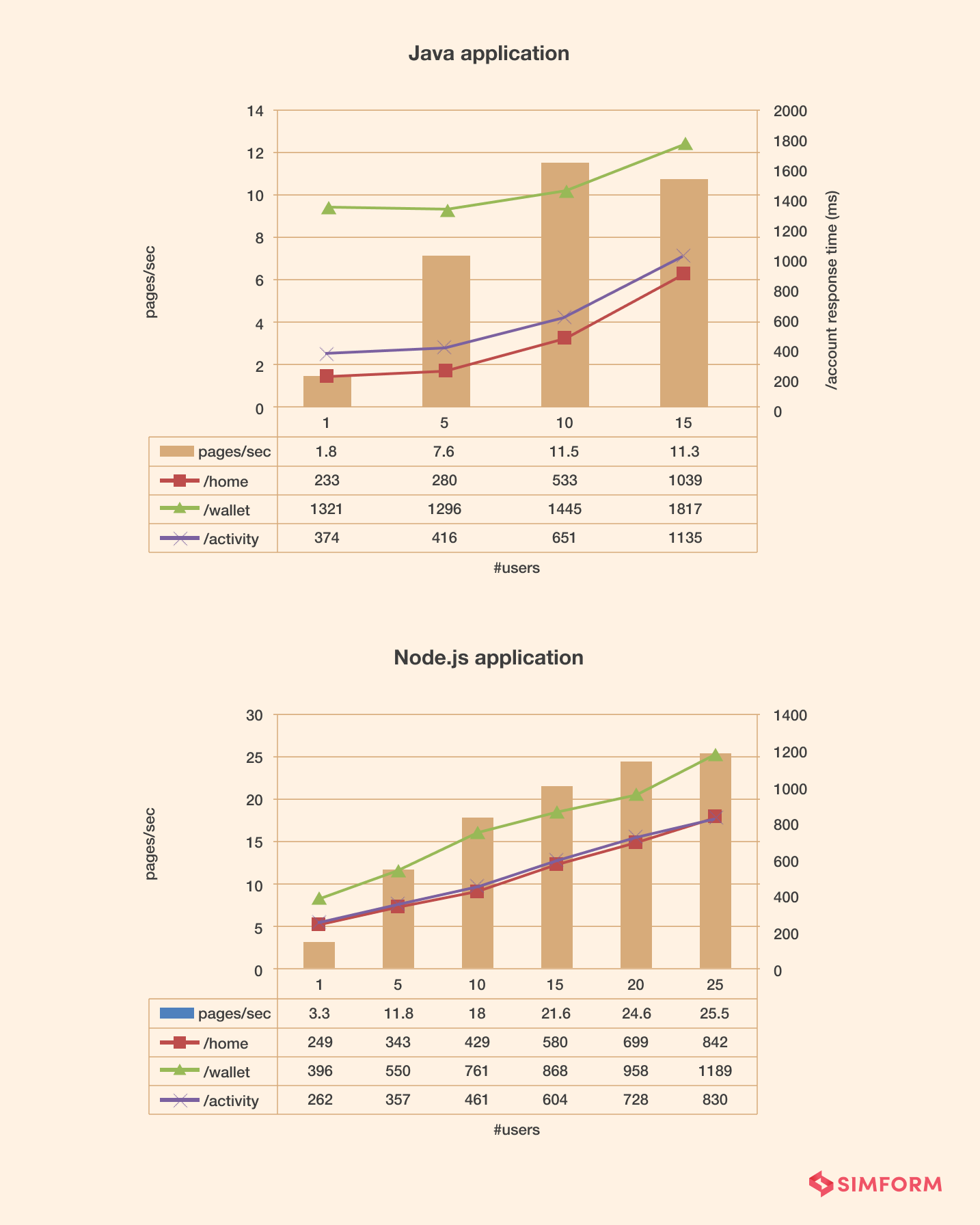
Netflix
As of the fourth quarter of 2020, Netflix had 203.67 million paid subscribers. It’s best known as the pioneer of online streaming; Netflix is built on the pillar of the Node.js framework. Netflix used Java on the server-side and JavaScript on the frontend side in the previous years, so developers had to code twice. Moreover, they were required to understand both languages. Additionally, the primary reason behind choosing Node.js is due to high performance. Ultimately, from a 40 minute+ startup time, they went to under a minute.
Uber
Uber chose Node.js to build a huge matching system because of its ability to align with its business needs and improved data processing capabilities. With the rising demand for on-demand taxi services, Uber needed to invest in a reliable system for its customers and drivers. Node.js does wonders in this, it makes it easier to process large amounts of data quickly and reliably, along with quick code deployment and continuously changing technology improvement. Currently, Uber can process over 2 million remote procedures.
Kris Kowal, Software Engineer at Uber, had some thoughts on Node.js technology ~
| “Node.js is particularly well-suited to writing systems that have all their state in memory. They do not have to externalize the concerns of a distributed system. As a consequence, the systems can be more available, and they can respond more quickly to requests by eliminating the reading/writing and the serialization of the state into a database.” |
FreeWire
Backed by British Petroleum (BP) and Volvo, FreeWire Technologies builds mobile power solutions and offers on-site power to substitute diesel generators for their remote power needs.
Simform developed a software solution on the cloud for servicing and managing fleet operations since FreeWire’s primary service is to deliver charging solutions on the cloud.
The solution offers data to measure a campaign’s success by tracking increased energy usage in new verticals and quantifying sustainability.
FreeWire’s mobile charging devices are connected through gateways over cloud IoT that can be managed from the back-office. The main objective of FreeWire is to power the entire back-office operations, fleet management, power delivery servicing, and fleet maintenance. At Simform, we helped achieve this primary goal by implementing Node.js technology and worked with the hardware team to integrate chargers with a cloud solution using Azure and AWS IoT. With Node.js, it has become easier to get device health status, delivery performance reports, and usage statistics by introducing this.
Initially, the main challenge was to ensure that billing, charging requests, and charging service delivery would always remain up. The acceptable downtime calculation for such services was less than 1 min/week. Across 250 cities, these mobile charging stations had pushed 1 GB per data. To overcome issues like high cost, time, and consuming app modification, the end solution must be to architect the data.
The solutions we provided to FreeWire’s EV mobile charging solution have become successful and-is proof of the advantages of employing a robust tech stack like Node.js in the backend and microservices architecture. This powerful tech stack has improved performance and speed in FreeWire’s application.
Common Features to Include During Real-time App Development
The famous companies like WhatsApp, Slack, Nest, Zendesk, Twitter, and more depend on real-time experience powered by real-time technology. Also, on-demand food delivery apps like Deliveroo enable users to order food on-demand and track it in real-time.
As a business owner of a real-time app, you will be left behind if you do not offer such an experience.
To enhance your user experience, we’ve put together a few important features that will give you an edge over your rivals. Let’s have a look!
#1 Real-time Communication
Real-time chat or messaging is an essential feature regardless of the area – healthcare, transportation, or on-demand apps. This feature improves web apps and aligns with users’ expectations. The key component of this feature is it allows multiple users to collaborate without delay and is the real success of this feature. It includes instant messaging, multiple group chats, audio or video calls, and video/voice messages.

This must-be core feature is a crux of real-time applications enabling users to share all types of files and documents. According to Statista, around 2.52 billion mobile phone users accessed over-the-top messaging apps to communicate in 2019. This number is projected to grow to 3 billion in 2022.

#2 Notifications
Notification is a vital feature of real-time applications, which is necessary to integrate since it lets users be informed that something relevant to them has happened. Put simply, it informs users about important events, brings users back to the services, and encourages them to use them again and again. Here’s an interesting fact: If the in-app notifications are used improperly, it might encourage users to stop using the application. There are two types of integrating notifications in an application, i.e., in-app notifications and push notifications.
In-App Notifications
In-app notifications appear within the application, and they can be seen only when users have them open. They are best suited to increase app usage and application retention.
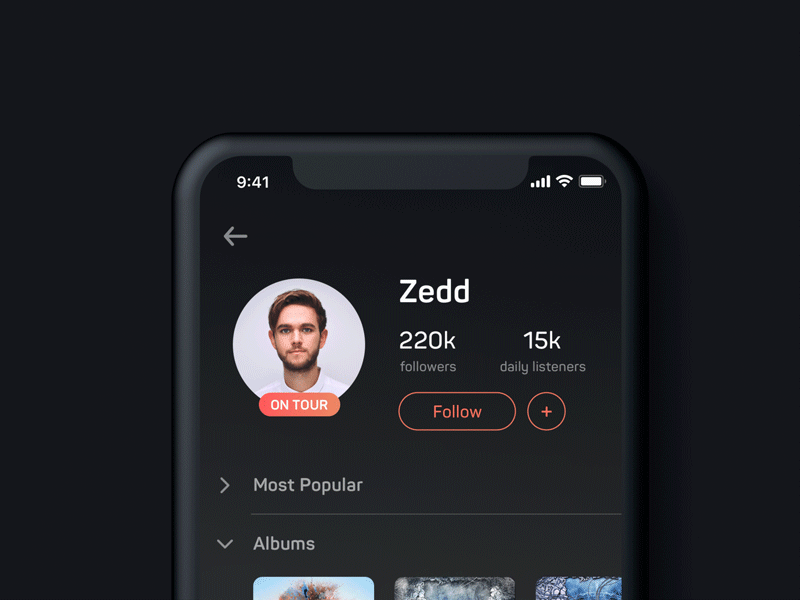
Push Notifications
On the other side, push notifications typically appear outside the application, regardless of whether the app is in use or not. Speaking of the benefits of push notifications in an application, these are: boosting user retention, increasing app engagement and conversion rates, enhancing user experience, and tracking user metrics.

Comparison between Push Notifications and In-App Notifications
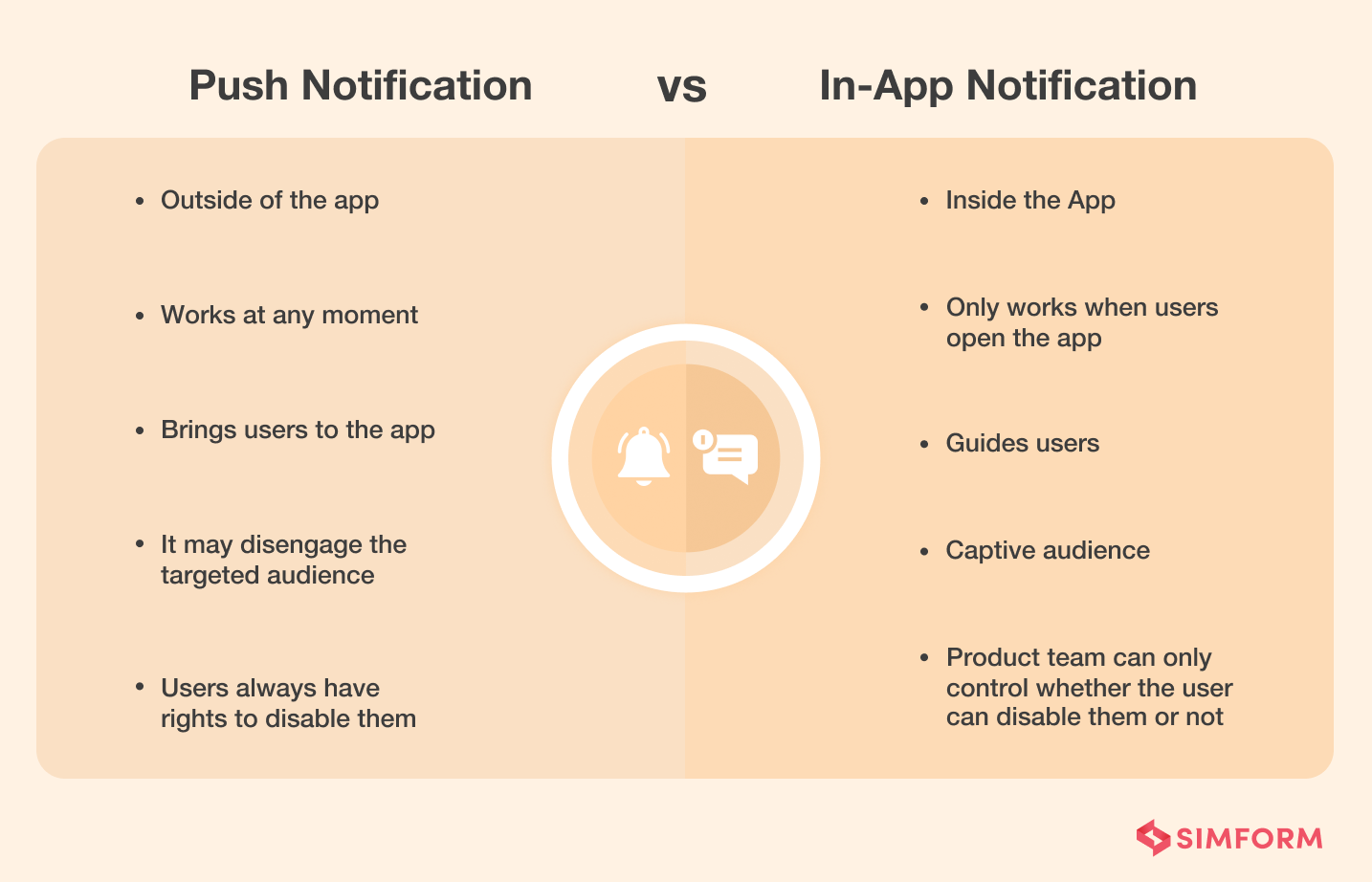
#3 Multi-user Collaboration
A must-have feature in real-time technology is to enhance and automate workflows that involve multiple users. For example, Google Docs (a writing document tool), project management tools, support systems, and logistics applications.
Undeniably, collaborative apps can save huge hours for organizations. Google Docs is a great example of a multi-user collaboration feature, where a number of users can make edits or comment at the same time.
Real-time documentation editing is a use case. Real-time data instantly sends the changes in data to an app to inform the users about what is going on. For example, in project management tools like Trello & Jira, moving between stages in a workflow instantly indicates progress, resulting in conversations or the next step in the workflow.
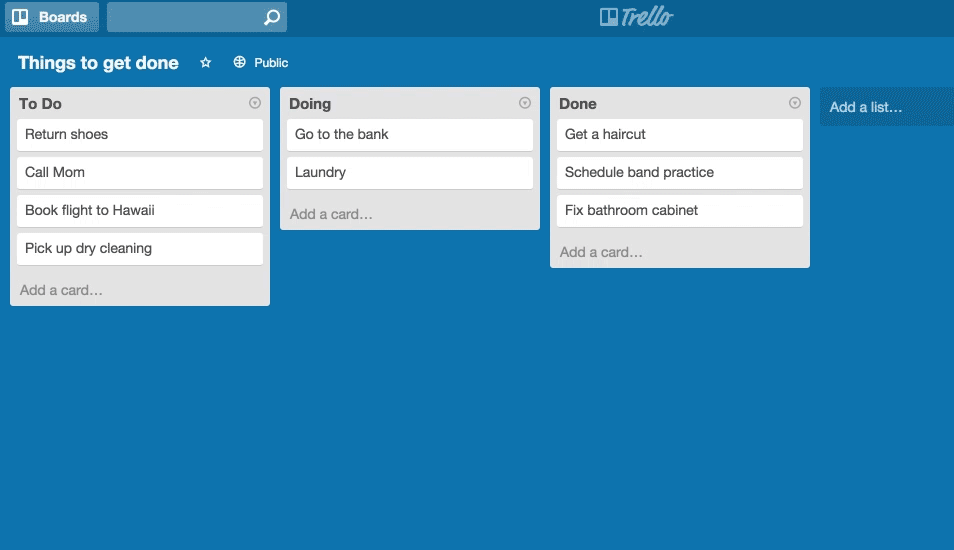
#4 Live Data Streaming
Live streaming is broadly used in real-time stock trades, on-demand ride-sharing apps, retail inventory management, and multiplayer games. From trading and real estate to media and logistics sectors, live streaming of data provides a continuous feed of data that can be utilized without requiring it to be downloaded first.
Live streaming is widely used in many areas, from social networking to real estate to logistics, because this feature allows an app to simultaneously create and deliver data to end-users and enable deeper user interactions.
This feature was first adopted by video streaming. After that, it became hugely popular on social networking apps like Instagram, Facebook, and YouTube. The global video streaming market size is expected to expand at an annual growth rate (CAGR) of 21.0% from 2021 to 2028, as per Grand View Research.
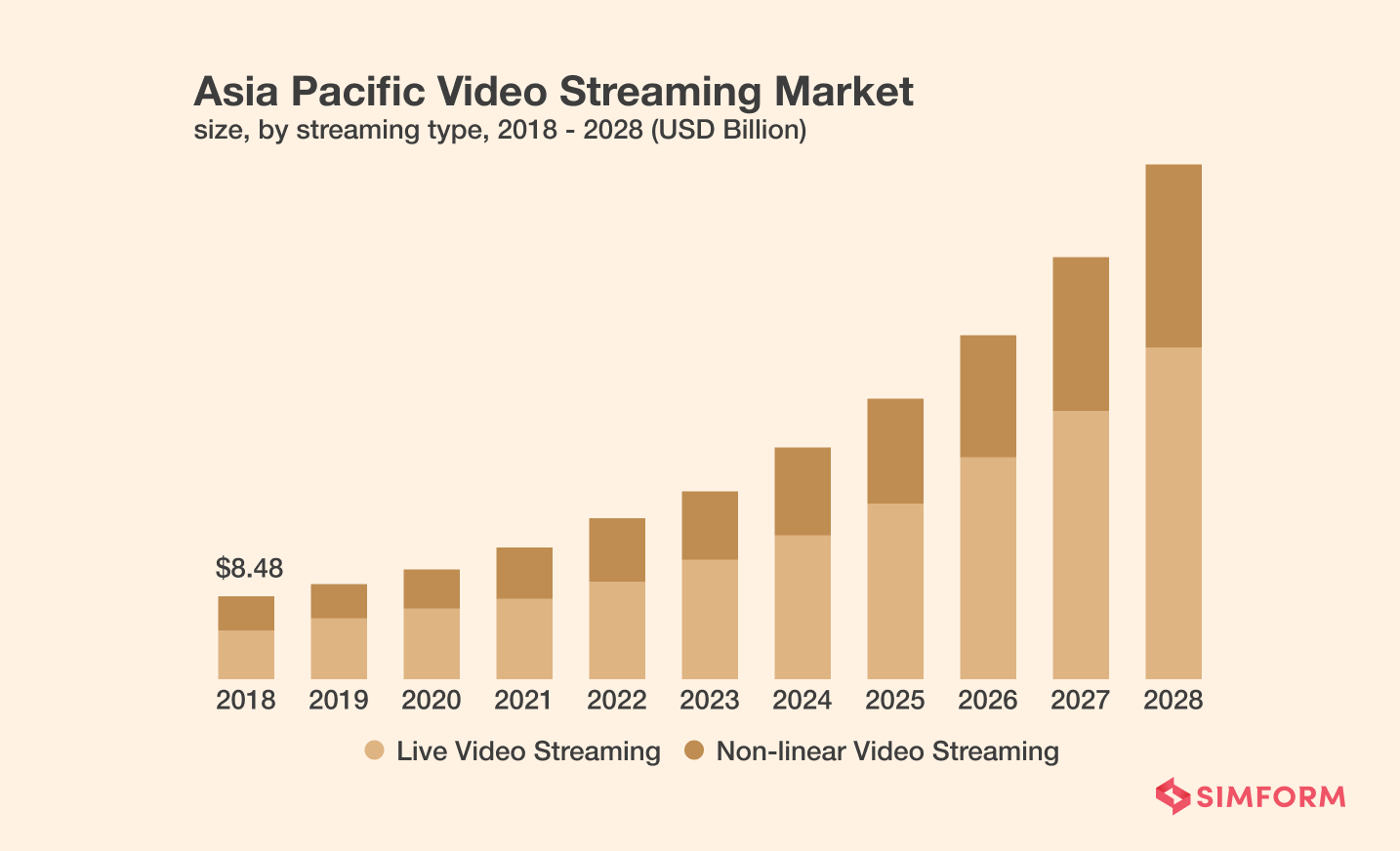
The famous live-streaming apps are Periscope, UStream, YouTube Live, Twitch, and Facebook Live are live streaming platforms where users can live and interact with their followers, view live videos, and enable users to watch and play video games and esports tournaments.

#5 Live Order Status
The live order status feature is essential for on-demand delivery and shipping apps which enables you to track orders and delivery in real-time. The popularity of this feature among users helps to fill the trust gap between delivery companies and customers. This must-have feature can benefit those companies who want to establish a strong bond with their customers with transparency.
On-demand laundry and dry cleaning service application, FlyCleaners, lets users know every step of delivering their products. The individual feature, current order status, allows users to know when their laundry is picked up, delivered, washed, and back to their addresses.

#6 Real-time Data Analytics
This must-be feature is the process of preparing and measuring data as soon as it enters the databases. Put it another way, it allows users to get insights into the data which enters their system. Businesses can bring enormous benefits from this feature as it enables them to react without delay and grab opportunities or prevent problems before anything happens.
The real-time data analytics feature is mainly used in the sectors such as eCommerce, trading, e-sports, etc., which require real-time updates on results.
#7 Real-time Feed
The real-time feeds feature gives the ability to connect with the data streams and get real-time data. This feature is widely used by social networking apps like Instagram, Snapchat, Facebook, and Twitter, where users can see new content and live comments without updating the feed. By implementing such a feature, users will get the latest and most relevant information immediately.
The popular social network Instagram is estimated to have 1.074 billion users globally in 2021. This social network has become a powerful networking channel with a Real-time feed feature since it provides what the audience wants, i.e., most engaging user-generated content.
What’s more, businesses can get huge benefits from such features as a real-time feed to expose their broadcasts, more followers, and get a big platform for increasing sales.

To Wrap-Up
And that’s it! You are all set to build your real-time app with Node.js and tie it all together with high performance and scalability. Now that you’ve already known the advantages of Node.js for building real-time applications, you’re probably itching to embark on a new project based on Node.js technology. Whether you’ll need to hire a professional Node.js development company or a team of Node.js experts, it’s high time to take the initiative and transform your ideas into reality in no time.

